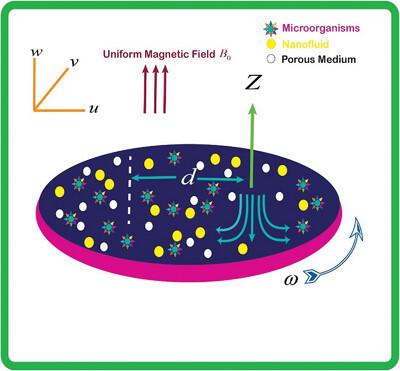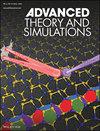Theoretical Exploration of Bioconvection Magneto Flow of Micropolar Nanomaterial Off-Centered Stagnation Point Framed by Rotating Disk
IF 2.9
4区 工程技术
Q1 MULTIDISCIPLINARY SCIENCES
引用次数: 0
Abstract
This study explores the bioconvection flow of MHD Micropolar nanomaterial having with motile microorganisms off-centered stagnation point across the rotating. The flow field study takes into account the impact of radiative flow, chemically reactive species, and the convective flow condition. The Buongiorno two-component nanoscale model is used to simulate Brownian movement with thermophoretic body force phenomena. Using dimensional similarity factors, the nonlinear partial differential equations related to boundary conditions are transformed by a complex dimensionless ordinary differential expression. The homotopy analysis method is applied to utilize the ordinary differential expression and envision the influence of resulting variables such as viscosity variable, spin gradient parameter, microinertia density parameter, porosity parameter, rotational parameter, Biot number, Brownian movement, thermal radiation, Prandtl number, and Bioconvection Lewis number over velocities, heat, and mass transfer characteristics in visually and the table formats. It is observed that the larger magnitude of the material variable, magnetic variable, and porosity variable reduces the radial velocity. Moreover, microrotational profiles depreciate quickly as spin gradient viscosity, micro-inertia density. The fluid temperature increases in direct correlation with thermal radiation, thermophoresis, and Biot number while microorganism density distribution reduces due to the larger values of Peclet number and Bioconvection Lewis number.

求助全文
约1分钟内获得全文
求助全文
来源期刊

Advanced Theory and Simulations
Multidisciplinary-Multidisciplinary
CiteScore
5.50
自引率
3.00%
发文量
221
期刊介绍:
Advanced Theory and Simulations is an interdisciplinary, international, English-language journal that publishes high-quality scientific results focusing on the development and application of theoretical methods, modeling and simulation approaches in all natural science and medicine areas, including:
materials, chemistry, condensed matter physics
engineering, energy
life science, biology, medicine
atmospheric/environmental science, climate science
planetary science, astronomy, cosmology
method development, numerical methods, statistics
 求助内容:
求助内容: 应助结果提醒方式:
应助结果提醒方式:


